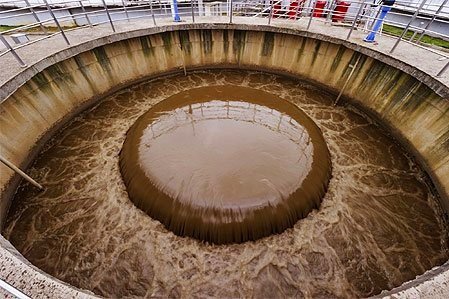Transforming Wastewater Sludge into Valuable Resources

As urban populations swell around the globe, an overlooked byproduct of our modern sewage systems is accumulating at an astonishing pace – wastewater sludge. This problematic solid waste is highly nutrient-rich yet challenging to manage sustainably. But innovative resource recovery techniques are now transforming sludge from an environmental liability into a circular economic asset supplying renewable energy, fertilizers, and specialty chemicals.
The Mounting Sludge Challenge
Municipal wastewater treatment plants concentrate solids and microbes from sewage influent into a residual slurry called biosolids or sludge. Worldwide, over 100 million dry tons of sludge are produced annually from these facilities. That volume is projected to double by 2050 as urbanization intensifies. Historically, sludge disposal meant landfilling, incineration, or land application – unsustainable options with major economic costs and environmental impacts. However, sludge’s rich organic matter and nutrient composition make it an attractive input for innovative circular processing.
Energy-Rich Biogas from Anaerobic Digestion
Among the most widespread sludge conversion methods today is anaerobic digestion, where microbes decompose organic matter in the absence of oxygen. This biological process reduces sludge volume while generating a valuable byproduct – methane-rich biogas. Wastewater facilities can capitalize on this renewable source of thermal energy by cleanly combusting the biogas onsite to generate electricity and meet heating/cooling demands. Optimizing operating parameters like moisture levels, retention times, and digester designs allows plants to maximize their biogas production and energy recovery.
For further biogas yield improvements, facilities are co-digesting sludge with other organic waste streams like fats, oils, greases, and even food wastes. Multi-feedstock digesters boost methane output, reducing reliance on fossil fuels while preventing organic wastes from reaching landfills. Anaerobic digestion residuals can also be further processed into nutrient-rich agricultural fertilizers, creating another value stream.
Nutrient Recovery for Fertilizers and Chemicals
The potential to recover essential plant nutrients like nitrogen, phosphorus, and potassium from sludge is driving another fascinating area of innovation. These chemicals are key ingredients for conventional fertilizer manufacturing, representing a massive global industry exceeding $200 billion annually.
Novel methods aim to selectively extract and concentrate nutrient compounds from sludge into purified fertilizer products. Technologies utilizing treatments with sulfuric acid, heat, pressure, or electricity can dissolve phosphorus and nitrogen from solid into liquid solutions for further refinement. Facilities may then recover ammonium sulfate, struvite, or other nitrogen/phosphorus fertilizers. Some processes even show promise for recovering rare earth elements, metals highly coveted for electronics manufacturing that become concentrated in sludge ashes after incineration.
Through such nutrient recovery implementations, municipal wastewater sludge could transition from a costly disposal burden into a sustainable revenue source for the fertilizer industry. And reclaiming these vital yet increasingly scarce nutrients from waste realigns with principles of circular economic systems.
Thermal Conversion for Biocrudes, Fuels, and Adsorbents
In the rapidly evolving realm of sludge-to-resource technologies, thermal conversion pathways represent some of the most innovative and environmentally-conscious solutions. Two standout approaches are hydrothermal liquefaction (HTL) and hydrothermal carbonization (HTC).
HTL subjects sludge to high temperatures and pressures in the presence of water, catalyzing chemical decomposition of the organic matter. This produces a biocrude oil that can be refined into renewable fuels, chemicals, or carbon adsorbents used for environmental remediation. The HTC process operates under milder conditions but yields a solid, carbon-rich material called hydrochar. This char has widespread applications as a soil amendment to improve water/nutrient retention and also serves as an adsorbent or solid fuel.
Another promising thermal conversion method is pyrolysis, or heating sludge in the complete absence of oxygen. This drives off moisture and volatile compounds, generating combustible gases and oils that can be condensed for fuel products. The solid carbon-rich residue or biochar aids in soil fertility while locking away atmospheric carbon dioxide – a significant climate change mitigation benefit.
Optimizing Logistics through Automation and Integrated Systems
For municipal wastewater facilities to more comprehensively tap into the value potential of their sludge streams, optimizing resource recovery logistics and controlling costs will be crucial. Modern automation and real-time monitoring systems provide a key advantage. Integrating digital sensors and control networks allows operators to continuously track sludge volumes, compositions, and conversion efficiencies across multiple interconnected processes. With enhanced operational oversight, facilities can adaptively fine-tune parameters for maximizing resource outputs and minimizing waste at every stage.
Other strategies for streamlining sludge management include mechanizing labor-intensive tasks like sludge hauling, transportation, and handling. Locating auxiliary resource recovery operations onsite also reduces residual shipping costs whenever feasible. Furthermore, purposefully designed hybrid conversion systems combining techniques like anaerobic digestion, nutrient extraction, and thermal processing show excellent synergies for comprehensively deriving value from sludge’s diverse components.
The Resource Revolution Underway in Wastewater Treatment
Until recently, sludge was largely viewed as an inevitable nuisance disposed of with little thought towards recovering its inherent worth. But a powerful paradigm shift is now transforming the wastewater sector. State-of-the-art resource recovery innovations are allowing municipalities to transform their residual sludge streams from costly liabilities into circular economic assets producing renewable energy, sustainable fertilizers, and valuable chemicals.
As urban centers expand worldwide, the challenges of managing ever-growing sludge volumes remain daunting. Yet the win-win opportunities of deriving resources from this residual have become too compelling to ignore. From recovering essential nutrients for agriculture to generating biogas for energy, techniques for creating value from sludge will be pivotal for realigning wastewater treatment with 21st century sustainability principles.
The residual solids accumulating in our sewers may seem unassuming, but their latent potential as feedstocks for fertilizers, fuels, and specialty chemicals represents a circular economic revolution underway. Converting what was once dismissed as waste into a wealth of valuable resources is not only pragmatic but essential as humanity strives to maximize resource efficiency, curtail environmental impacts, and build more regenerative systems. This sludge-to-resource movement embodies the societal shift towards embracing circular practices as the cornerstone of sustainable municipal infrastructure.
No longer should nutrient-rich residuals be squandered and discarded. The wastewater treatment plants of the future will transform what was once an environmental liability into renewable assets sustainably powering our cities, fortifying our agriculture, and manufacturing high-value chemical products. As sludge valorization innovations flourish, pioneering facilities are previewing the circular economic model fast becoming an inevitability for next-generation waste management.


